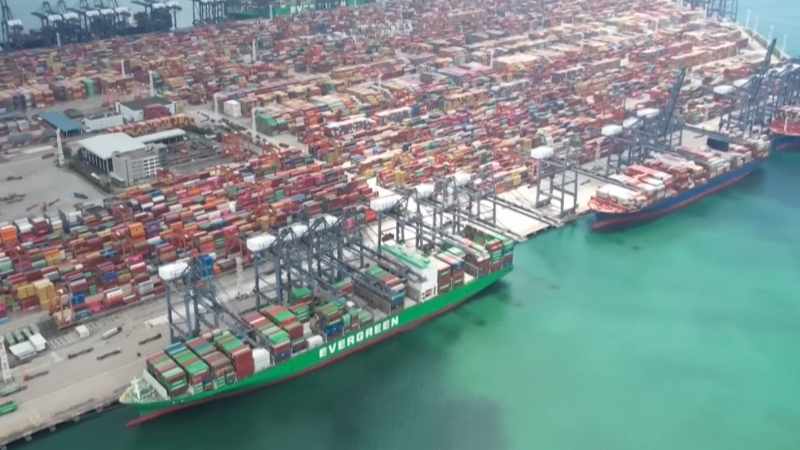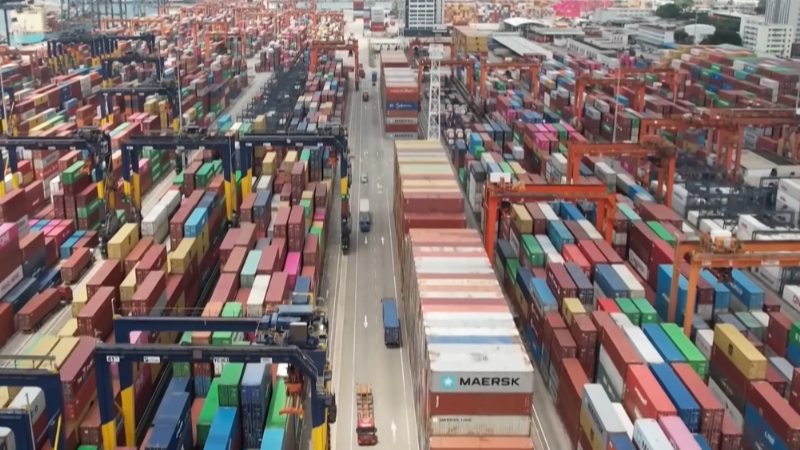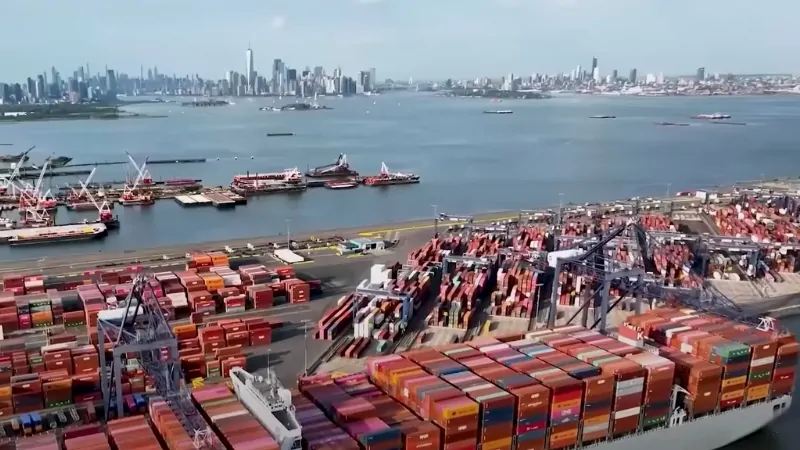For years, U.S.–China trade tensions were seen as temporary turbulence in an otherwise interdependent global system. That illusion is gone. What began as a tariff skirmish in 2018 has hardened into a structural feature of the global economy.
American companies now treat tariffs, export controls, and investment restrictions as permanent background conditions. Every boardroom discussion about sourcing, market access, or capital spending has to account for political risk between Washington and Beijing.
The effects reach far beyond the headlines. Electronics, clean energy, automobiles, and advanced manufacturing all face higher costs, shifting rules, and unpredictable compliance landscapes.
Yet demand from U.S. consumers and global markets continues to push companies to innovate and compete. The challenge is no longer about whether to decouple from China but how to adapt intelligently to a fragmented and volatile trade environment.
Key Points
- U.S.–China tensions have become a lasting structural reality, not a temporary dispute.
- American firms now factor tariffs, export controls, and compliance risks into daily operations.
- Supply chains are diversifying through “China plus one,” nearshoring, and friendshoring models.
- Success depends on flexibility, compliance investment, and regionalized production networks.
Trade War and Strategic Rivalry
According to the Council on Foreign Relations, tariffs between the United States and China have evolved from a short-term trade dispute into a long-term power struggle.
What began as targeted tariffs in 2018 has expanded into a broad framework of strategic rivalry that shapes how both economies trade, invest, and innovate.
How the Tensions Began and Evolved
The United States launched broad tariffs on Chinese imports in 2018 under Section 301 of the Trade Act. China retaliated, triggering a spiral of duties on goods ranging from steel and machinery to toys and textiles.
Studies by the Council on Foreign Relations and major universities confirmed that both sides suffered, but the larger burden fell on U.S. firms and consumers. Importers paid higher prices while exporters struggled with retaliatory barriers.
The Biden administration chose not to unwind those tariffs. Instead, policy shifted toward a strategy of “de-risking” rather than rolling back duties. The idea was to reduce dependence on China in critical technologies while keeping global trade functional.
In May 2024, new Section 301 tariffs were announced on sectors tied to clean energy and advanced manufacturing. Key targets included:
- Electric vehicles: tariff rate raised to 100%
- Lithium-ion batteries and parts: up to 25%
- Solar cells and panels: 50%
- Steel and aluminum products: 25%
- Certain medical products and port cranes: 25%
The increases are being phased in between 2024 and 2026. Meanwhile, export controls became another pillar of policy. Since 2018, the U.S. has tightened rules on semiconductors and advanced equipment, often coordinating with Japan and the Netherlands.
Those restrictions limit China’s access to leading-edge chips and tools, with each new round of rules adding uncertainty to global tech supply chains.
China has responded with its own countermeasures, including export controls on gallium, germanium, graphite, and rare minerals used in batteries and semiconductors. It has also strengthened domestic rules on data and cybersecurity, adding another layer of risk for foreign companies.
For American businesses, the message is simple: policy volatility is not a phase but a new operating condition.
The Direct Impact on American Firms

Tariffs, export controls, and compliance rules have reshaped the business environment for U.S. companies.
The immediate effects show up in higher costs, tighter margins, and a constant need to adjust pricing, sourcing, and legal strategies just to stay competitive.
Rising Costs and Squeezed Margins
Research from the U.S.–China Economic and Security Review Commission and academic institutions like Stanford reveals a consistent pattern.
Tariffs raised import prices for American buyers, and those higher costs were largely passed on to firms and consumers rather than absorbed by Chinese exporters.
Key Findings
- China’s share of U.S. goods imports dropped from 22% in 2017 to roughly 16% within a few years.
- Imports from Vietnam, Mexico, and India grew, but many of those countries still source intermediate goods from China.
- Consumer categories such as furniture, electronics, and household goods saw visible price increases due to tariffs.
Initially, most firms took tactical steps: negotiate supplier prices, redesign products to shift tariff classifications, or absorb part of the hit in their margins.
Over time, those stopgap measures turned into long-term restructuring of supply chains and pricing strategies.
Compliance and Policy Risk
Tariffs are just one piece of the puzzle. Export controls, sanctions, and investment screening have created a dense regulatory web that firms must navigate.
For instance, in the semiconductor industry, U.S. export control rules specify which chips, design software, or manufacturing tools can be sold to certain Chinese customers. Violations carry severe penalties, pushing companies to invest heavily in compliance systems.
The Brookings Institution has noted that many Chinese firms fall under scrutiny for potential ties to state intelligence or military use, adding to the complexity.
China’s counter-rules are no less burdensome. Data localization laws, cybersecurity reviews, and export controls on strategic materials mean that U.S. companies must balance two incompatible legal systems.
Modern supply chain management now requires:
- Dedicated legal teams for U.S.–China compliance
- Continuous scenario planning for new tariffs or restrictions
- Flexible contracts that anticipate sudden policy shocks
Platforms such as PackyApp have become key in managing real-time tracking and documentation for cross-border parcels between U.S. suppliers and Chinese logistics hubs.
How Supply Chains Are Actually Shifting

Supply chains are shifting, not collapsing. Instead of cutting ties, American companies are rerouting production, spreading risk, and building regional networks that balance cost, access, and stability.
The “China Plus One” Reality
While headlines often describe a full “decoupling,” the data shows something more nuanced. Research from the World Bank and global trade trackers points to diversification rather than disengagement.
Supply chains are being rearranged, not dismantled. Typical patterns include:
- China’s share of U.S. imports declined, but total import volumes held steady.
- Vietnam and Mexico gained share, but their own imports from China increased.
- China remains central in the production of components and materials.
Most U.S. companies now operate under a “China plus one” or “China plus few” model:
- Maintain Chinese facilities for domestic Chinese sales and parts of the Asian or European market.
- Add new capacity in other countries to supply the United States and reduce exposure to tariff risk.
The outcome is a networked structure rather than a clean split.
Nearshoring and Friendshoring
Two strategies stand out in trade data:
- Nearshoring: moving production closer to U.S. consumers, especially to Mexico and sometimes Canada.
- Friendshoring: partnering with trusted political and security allies such as Japan, South Korea, or EU member states.
A 2023 Bank for International Settlements bulletin highlighted Mexico’s rise as America’s top trading partner, fueled partly by the reconfiguration of China-related manufacturing.
Mexico’s proximity, USMCA advantages, and established industrial clusters have made it a natural destination for American companies seeking lower-risk alternatives.
Sector-by-Sector Adjustments
Each industry has faced the U.S.–China trade tensions in its own way. The effects vary by sector, shaped by how dependent each is on Chinese suppliers, markets, or technology.
Manufacturing and Consumer Goods
Manufacturers in electronics, apparel, and home goods have had to balance cost, quality, and risk. Many of them:
- Shifted final assembly to Vietnam, Indonesia, or Mexico.
- Continued sourcing intermediate components from China.
- Used tariff engineering, free trade zones, and duty drawback programs to lower exposure.
The resulting system often resembles a “hub and spoke” model where China remains the hub for intermediate goods, while final products are assembled elsewhere for export to the U.S.
Clean Energy and Green Tech
Clean energy supply chains have become one of the most contested fronts in trade tensions. China dominates global production of solar panels, battery cells, and critical minerals. At the same time, U.S. policy aims to reduce that dependence through industrial incentives.
Higher tariffs on Chinese EVs, batteries, and solar cells are intended to protect domestic and allied producers.
Analysts at Columbia University’s Center on Global Energy Policy report that this is pushing American investment toward “third countries” such as Malaysia, South Korea, and Poland, which are emerging as alternative manufacturing hubs. Here are the common moves by U.S. firms:
- Form partnerships with Korean and Japanese producers to diversify supply.
- Build new battery and solar plants in the U.S., Mexico, or Canada using tax credits from the Inflation Reduction Act.
- Sign long-term mineral contracts with non-Chinese suppliers in Australia, Chile, and Africa.
The result is a fragmented but more resilient ecosystem, where production spreads across several jurisdictions.
Semiconductors and Advanced Technology

Semiconductors are the most strategic and heavily regulated sector. U.S. export controls limit high-performance chip sales to China, forcing companies to rethink design and manufacturing strategies.
Typical Adaptations
- Product segmentation: design versions of chips that stay just below export-control thresholds.
- Geographic diversification: build fabrication plants in the U.S., Japan, and Europe under subsidy programs like the CHIPS Act.
- Compliance infrastructure: invest in software systems and dedicated teams to manage export licenses and monitor Chinese customers.
Meanwhile, China is accelerating its domestic chipmaking ambitions, focusing on mature-node technologies where restrictions are less severe. American firms now face a dual challenge: maintaining competitiveness in unrestricted markets while staying compliant in restricted ones.
Finance and Resource Industries
Financial institutions are also reshaping their exposure. Large U.S. banks and funds are channeling investment into “critical supply chains, ”battery plants, rare mineral projects, and semiconductor facilities, often backed by federal incentives.
Many have also trimmed their portfolios of Chinese assets tied to sensitive sectors.
Resource firms, particularly in energy and mining, are pursuing similar shifts. The trade environment has made resource security a central investment theme, prompting more joint ventures in North America and allied countries.
What the Data Says About Decoupling
The idea of total “decoupling” between the U.S. and China is misleading. Research by the World Bank, OECD, and major universities shows that while trade routes have changed, the underlying economic connections persist.
Trends Observed In Trade Data
| Indicator | 2017 | 2024 | Key Observation |
| China’s share of U.S. imports | 22% | 16% | Partial rebalancing, not full exit |
| Vietnam’s share | 2% | 4–5% | Rise fueled by relocation of Chinese-linked production |
| Mexico’s share | 13% | 15%+ | Nearshoring effect under USMCA |
| U.S. total import value | High | Still high | Trade volume remains robust |
| Global FDI into manufacturing | Rising outside China | Mixed in China | Diversification, not withdrawal |
The conclusion from academic studies is consistent: supply chains have rerouted, not vanished. Firms are maintaining Chinese inputs where they are cost-effective while relocating final assembly and high-sensitivity operations elsewhere.
Common Adjustment Strategies in Practice
| Strategy | Typical Users | Main Upside | Main Risk / Trade-off |
| China plus one supply chain | Mid-to-large manufacturers | Lower concentration risk | Higher coordination costs |
| Nearshoring (Mexico/Canada) | Auto, electronics, consumer goods | Shorter delivery times | Infrastructure and logistics limits |
| Friendshoring | Tech, clean energy, pharmaceuticals | Stronger IP protection | Higher production costs |
| Reshoring to the U.S. | Strategic industries | Policy incentives, control | Capital intensity and labor shortages |
| Tariff engineering | SMEs and consumer brands | Flexible pricing | Design and compliance expenses |
| Dual market models (“in China, for China”) | Global brands | Keeps China market access | Complex management, local risk |
Each approach carries trade-offs, but all point toward the same reality: diversification is the new normal.
A Practical Playbook for U.S. Businesses

American companies facing prolonged U.S.–China tensions need structure, not slogans. Here’s how firms are actually reorganizing mapping exposure, segmenting risks, and embedding compliance and diversification into daily operations.
1. Map Exposure with Precision
Companies start by identifying where they are exposed:
- Direct imports from Chinese suppliers
- Indirect exposure through third-country suppliers
- Sales to Chinese customers or subsidiaries
- Dependence on Chinese-controlled materials or technologies
Many firms underestimate indirect exposure, especially through suppliers in Vietnam or Mexico that still rely on Chinese components.
2. Segment Products and Markets
Firms then sort their products by risk level:
| Risk Tier | Typical Examples | Common Policy Threats |
| High | Advanced chips, defense-related tech | Export controls, sanctions |
| Medium | EVs, batteries, solar panels | Tariffs, subsidies |
| Low | General consumer goods | Tariff exposure only |
That segmentation guides where to invest in diversification and how to allocate resources.
3. Diversify without Losing Efficiency
Few companies abandon China entirely. The winning formula blends diversification with continuity:
- Move final assembly to lower-risk countries.
- Retain Chinese suppliers for components where they remain unmatched.
- Use regional logistics hubs as buffers between production and markets.
4. Invest in Compliance as A Core Function
Modern trade requires constant legal vigilance. Best practices include:
- Expanding in-house trade compliance teams.
- Using digital systems that track export rules and end-user status.
- Drafting flexible contracts to adapt to policy changes.
For sectors like semiconductors or renewable energy, compliance spending has become a capital investment rather than an expense.
5. Rebalance Capital Allocation
Trade and industrial policy interact. Firms are channeling new investment toward regions that combine incentives and predictability:
- U.S., Canada, and Mexico for domestic manufacturing and tax credits.
- Southeast Asia and Eastern Europe for alternative export bases.
- Resource projects in allied countries to secure critical inputs.
6. Price and Contract for Volatility
Since policy shocks are recurring, contracts increasingly include:
- Adjustable pricing for tariff or currency changes.
- Multi-sourcing clauses to switch suppliers rapidly.
- Shared-risk structures in joint ventures or high-tech exports.
Such tools allow firms to absorb shocks without collapsing their operations.
The Long-Term Outlook
If war is what the U.S. wants, be it a tariff war, a trade war or any other type of war, we’re ready to fight till the end. https://t.co/crPhO02fFE
— Chinese Embassy in US (@ChineseEmbinUS) March 5, 2025
American companies are not betting on a thaw in U.S.–China relations. They are embedding resilience directly into their operating models. The new trade environment rewards flexibility, compliance capability, and geographic balance.
Patterns Emerging Across Industries
- Complete decoupling is rare.
- Supply chains are regionalizing rather than globalizing.
- Companies build redundancy instead of relying on single-country efficiency.
- Geopolitical literacy has become as critical as cost optimization.
The broader outcome is a world where trade continues but with higher friction and strategic caution. For businesses that adapt early by diversifying, investing in compliance, and rethinking partnerships, the turbulence of U.S.–China rivalry becomes manageable rather than catastrophic.
Summary
@dwnews China stands firm against Trump’s unpredictable trade strategy, dragging diplomacy, markets and consumers into uncertainty ahead of the November 10 trade deal deadline. Could China be betting on the trade strategy nicknamed Trump Always Chickens Out (TACO)? #dwbusiness ♬ original sound – DW News
Trade tensions between the United States and China have shifted from a temporary disruption to a permanent structural factor in global commerce. American businesses have stopped waiting for normalization.
They are rebuilding around risk: spreading suppliers, reinforcing compliance, pricing volatility into contracts, and leveraging industrial policy incentives at home and abroad.
The pattern is not separation but reconfiguration. Supply chains now weave through Mexico, Vietnam, and allied nations while still touching China for components and raw materials.
Firms that succeed in this new environment share one trait: they treat geopolitical uncertainty as a core business discipline, not an external problem.
By adapting with agility and realism, American companies are shaping a new phase of globalization that is more regional, more complex, and, perhaps, more resilient than the one that came before.








